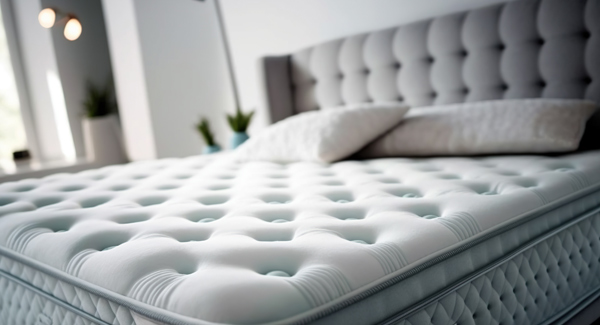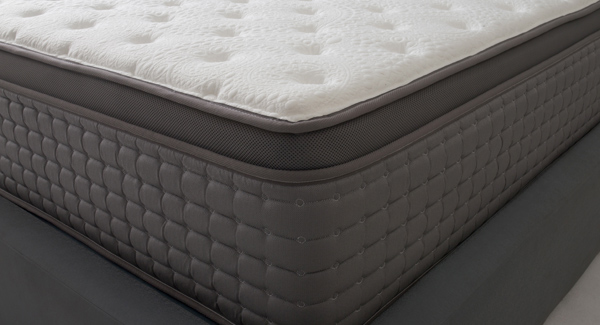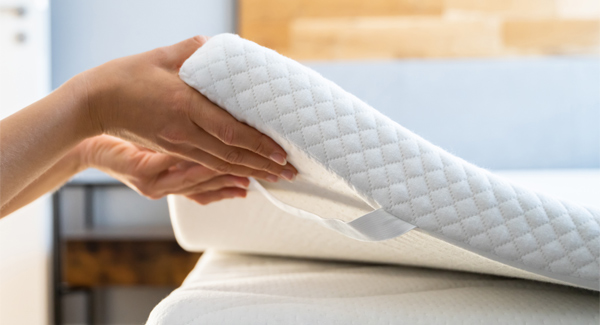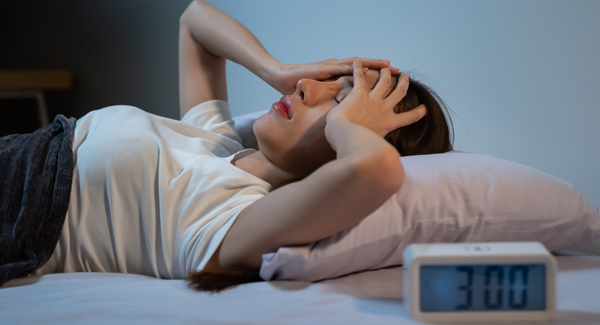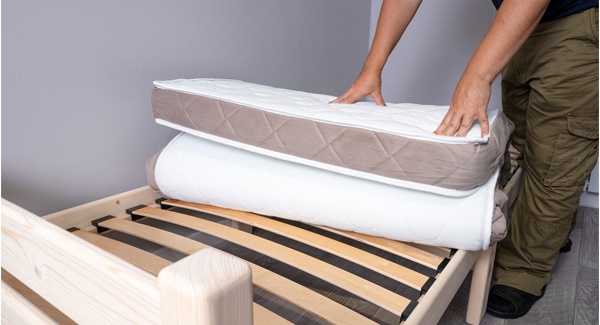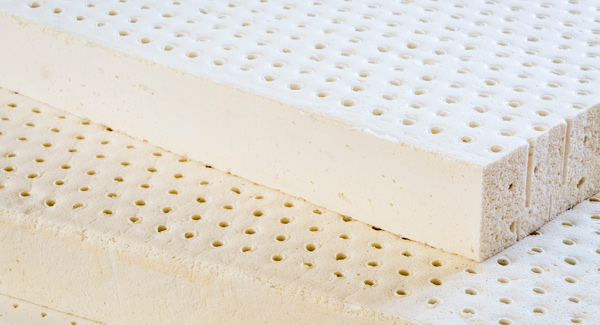Home » Mattress types » Pillow Top Mattresses Explained
Pillow-Top Mattresses Explained
Article navigation
- Published:
- Written by: Tony Brown
- Topic: Mattress types
A pillow-top mattress has an additional layer sewn or stitched into the top of the mattress. The top section, referred to as the pillow-top, is typically made of soft materials that provide a plusher and more luxurious feel.
Underneath the pillow-top is the support layer, which provides the underlying support. While some pillow-top mattresses may incorporate a spring system in the support layer, others use foam-based materials.
Pillow-tops have become popular, with most manufacturers featuring them in their collections.
The pillow-top section
Pillow-top mattresses have a distinct design, where the top layer is usually sewn or stitched into the top of the mattress, leaving a slight gap around the perimeter.
The pillow-top layer is constructed using various materials to provide a soft and sumptuous sleeping surface. Each material has specific benefits and is chosen for its softness, resilience, durability, pressure relief and breathability.
Synthetic materials like compact pads and fibrefill are typically used in more affordable models, whereas generous amounts of natural fillings such as wool, silk, and horsehair are often preferred in better-quality models.
The thickness of the pillow-top section will vary depending on the model and the materials used, but it is usually around two to four inches thick.
The support section
The support layer, which is underneath the pillow-top, provides essential support and a sturdy foundation.
Some pillow-tops have spring interiors, like open coils or pocket springs in the support section. Open coils consist of a series of interconnected springs that are typically hourglass-shaped. They are often more affordable than other support systems. However, as movement is transferred across the entire sleeping surface, coil springs can feel quite bouncy. They may not provide as much targeted support or motion isolation as other options, meaning sleeping partners are more likely to disturb one another in bed.
Pocket springs are individually wrapped springs. Each spring works independently, when needed, to conform and adapt to the body. Pocket springs provide better support and absorb movement, reducing partner disturbance.
Other pillow-top mattresses may utilise different types of foam in the support layer to provide the necessary support and alignment for the sleeper.
What are the benefits of a pillow-top mattress?
Pillow-top mattresses offer several benefits, making them an appealing option for many sleepers.
Comfort
Pillow-top mattresses are typically made with soft materials that provide exceptional comfort. The extra cushioning creates a plush and luxurious feel, allowing the sleeper to sink deeper into the mattress. A feeling often described as sleeping on a cloud.
Pressure relief
The extra padding in the top layer can help alleviate painful pressure points, resulting in less tossing and turning and more restful sleep.
Ideal for side sleepers
Side sleepers often prefer pillow-top mattresses because they can closely conform and cradle the body. The extra padding cushions the shoulders and hips, reducing the risk of pressure build-up in these areas.
Non-turn
Unlike traditional mattresses that often need to be flipped over to even out the wear, pillow-tops are single-sided and only need to be rotated occasionally. There is no heavy lifting involved, keeping physical effort to a minimum.
Reduced partner disturbance
Pillow-top mattresses can help minimise motion transfer, making them ideal for couples that share a bed. The cushioning in the pillow-top layer absorbs movement, meaning that sleeping partners are less likely to disturb each other when they toss and turn in bed.
What are the drawbacks of a pillow-top mattress?
While pillow-tops have their benefits, they also have some drawbacks. Here are a few potential disadvantages.
Lack of edge support
Poorly constructed pillow-top mattresses may lack sufficient edge support, resulting in the perimeter compressing or sagging over time. The lack of edge support can give sleepers the feeling that they are rolling out of bed. Consequently, sleepers may naturally gravitate towards the middle of the bed, reducing the useable sleeping surface.
May not provide adequate support for heavier individuals
Heavier individuals generally require a firmer mattress to maintain proper alignment. As pillow-top mattresses typically provide a softer sleeping surface, a heavier person may sink too far into the mattress, leading to a feeling of ‘bottoming out’. The softer cushioning may cause the body to slouch, leading to improper spinal alignment. This can result in discomfort and make it more challenging for them to change sleeping positions. Fortunately, there are some ways to make a pillow-top mattress firmer.
Potential for premature sagging
Some pillow-top mattresses may be susceptible to premature sagging, especially around the pillow-top area. The upholstery may compress and lose its loft over time, resulting in an uneven and less supportive sleeping surface.
Difficulty in finding suitable bedding
Pillow-top mattresses are generally deeper than ordinary mattresses because of the additional cushioning layer. Whilst most standard bedding should fit a pillow-top mattress, it’s important to ensure the bedding and mattress are compatible. If the sheets are too tight, it can place undue stress on the pillow-top section, potentially leading to damage or premature wear.
The extra layer of padding in the pillow-top requires a little more room, so it’s recommended to choose deeper bedding or those specifically designed for thicker mattresses.
Can you flip a pillow-top mattress?
Pillow-top mattresses are single-sided and not designed to be flipped over. Unlike traditional mattresses, with fillings on both sides, pillow-tops only have one sleeping surface. The underside is not suitable for sleeping.
However, while large mattresses can be heavy and often difficult to turn, pillow-top mattresses only need to be rotated.
How often you rotate a pillow-top mattress can vary depending on the manufacturer’s recommendations. Generally, pillow-top mattresses should be rotated once a week for the first three months of use and then once a month after that. Turning your mattress helps to even out the wear and minimise the formation of body impressions. It can also help to extend the life of the mattress.
How long do pillow-top mattresses last?
The lifespan of a pillow-top mattress can vary depending on several factors, such as its construction, material quality and quantity, usage, and care and maintenance. A well-maintained pillow-top mattress can last between seven and ten years. Some may last longer, while others may wear out sooner.
As pillow-top mattresses are single-sided, all the wear and tear is concentrated on one side of the mattress. As a result, pillow-tops typically have a shorter lifespan than other mattress types.
With poorly-constructed pillow-top mattresses, premature sagging around the edges may become noticeable. This may impact the overall edge support, sometimes making people feel like they are falling out of bed.
Another factor that contributes to the longevity of a pillow-top mattress is its usage. A pillow-top mattress will wear out faster if it supports more weight. For example, a heavier person weighing sixteen stone (kg) will put more strain on the mattress than a lightweight person weighing eight stone (kg). A pillow-top mattress is also likely to wear out sooner when two people share a bed than a single person sleeping alone.
As with all mattresses, the components inside will break down over time. In particular, the pillow-top section may compress and lose its initial plushness.
A pillow-top mattress containing natural materials, such as wool, silk and natural latex, will typically last longer than one containing synthetic materials, such as ordinary foam and fibre fill.
Pillow-top mattresses may incorporate a spring system to provide the underlying support. The type of spring system used in a pillow-top mattress can affect its longevity. For example, while open coils may be more affordable, they generally have a shorter lifespan. In contrast, pocket springs are typically longer-lasting and provide superior support.
Some pillow-tops may contain foam in the support section instead of springs. There are different qualities of foam, and some will last longer than others.
To prolong the life of the mattress, it’s recommended to follow the manufacturer’s care instructions. This may involve regularly rotating the mattress to allow the upholstery to settle evenly and minimise the development of body impressions, as well as using a mattress protector.
How to clean a pillow-top mattress
How you clean a pillow-top depends on the materials within the mattress. Before cleaning, you should always refer to the manufacturer’s care instructions which are usually provided with the mattress.
Each pillow-top mattress will come with specific cleaning instructions. If the pillow-top contains loose fillings, you should avoid vacuuming the mattress, as this can dislodge the fillings and cause the mattress to sag or go lumpy. Instead, you should remove dust and dirt from the surface with a soft brush.
Otherwise, gently vacuum the topside of the mattress using a clean brush attachment, ensuring that the vacuum does not snag the material.
How do you fix a sagging pillow-top mattress?
With new pillow-top mattresses, body impressions and indentation can start forming on the mattress’s surface, where most of the sleeper’s weight is concentrated. This is expected and does not necessarily mean the mattress is sagging prematurely. Rotating the mattress should help to even out the wear.
If this does not resolve the issue, inspect the bed base on which the pillow-top mattress is resting on. An old worn-out bed base could be causing the mattress to sag. If the mattress sits on a slatted bed frame, ensure that the mattress is not sagging between the slats. Similarly, if the mattress rests on an old worn-out divan base, it may conform to its shape.
An unsuitable bed base can affect how the mattress performs and invalidate the mattress guarantee. So it’s best to replace an old bed base as soon as possible.
If you’ve bought the mattress and the bed base together and find the fillings are not recovering after turning the mattress, it could be faulty. In this instance, speak to the store where you purchased the bed.
However, as with all mattresses, the components will naturally deteriorate and break down over time. When this happens, it is best to replace the mattress as soon as possible, as persevering with a worn-out mattress will affect your sleep quality.
What are the alternatives to a pillow-top mattress?
Pillow-top mattresses are a popular type of mattress. However, they may not be suitable for everyone. Here are some alternatives to consider.
Double-sided pocket spring mattresses
Pocket springs are individual springs that are wrapped in fabric and stitched together. Each spring can move independently and adapt to body shape. Pocket springs are a good alternative to pillow-tops because they provide good support and evenly distribute body weight. Double-sided pocket spring mattresses have fillings on both sides. Unlike pillow-tops, these mattresses can be flipped over and used on both sides, which helps to prolong the mattress’s life and even out the wear.
Memory foam
Memory foam is a popular mattress material that gently moulds and adapts to body shape. The material provides excellent pressure relief and distributes body weight evenly. Memory foam absorbs movement and can significantly reduce partner disturbance during sleep. The material is a good option for those who prefer a mattress that cradles the body.
Latex
Like memory foam, latex conforms to body shape, ensuring proper spinal alignment and pressure relief. Latex can be made of natural or synthetic rubber and has a more bouncy and responsive feel. The material is resistant to dust mites, mould, and bacteria, making it a good option for those suffering from allergies.
Hybrid
Hybrid mattresses typically combine springs with different comfort layers, such as foam, latex, or gel. They offer the best of both worlds, with the bounce and support of springs with the comfort and pressure-relieving benefits of foam. However, like pillow-top mattresses, hybrids are often single-sided and may have similar limitations in terms of wear and tear.
Final thoughts
Pillow-top mattresses provide generous cushioning and softness, making them an appealing option for many sleepers. However, it’s vital to consider the quality and construction of the pillow-top, as poorly made models may not provide adequate support or durability. Conducting thorough research beforehand can help ensure you find the right mattress that meets your needs.

About the author
Tony Brown is the founder and creator of The Bed Consultant. His career in the bed industry began in 2002. After graduating from university with a degree in Business Administration, Tony joined one of the largest independent furniture retailers in the UK as a bed consultant. Tony has helped thousands of customers find the perfect mattress.

